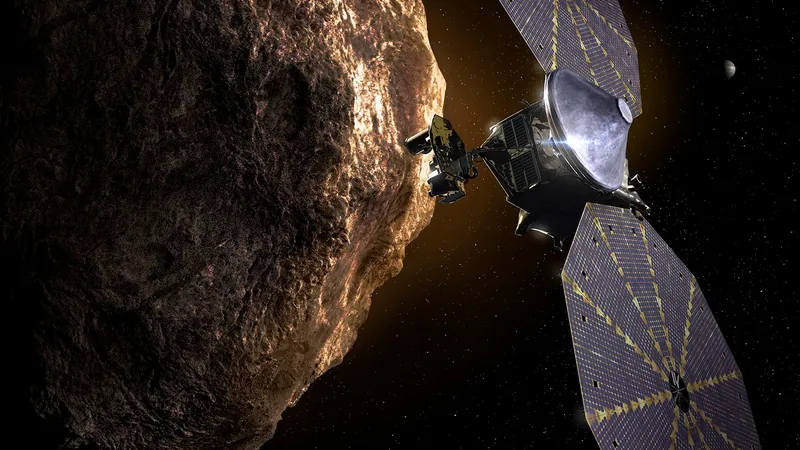
NASA's Lucy Probe Makes History with Asteroid Encounter on Easter Sunday
2025-04-20
Author: Ken Lee
Easter Sunday Surprise for Astronomy Enthusiasts
While most were enjoying Easter festivities, the astronomy community had their gaze fixed on the skies! NASA's Lucy spacecraft was set to perform a thrilling flyby of the asteroid Donaldjohanson at precisely 1:51 p.m. EDT (1751 GMT) on April 20, 2025.
Lucy: The Spacecraft on a Mission to Unravel Solar System Secrets
Launched in 2021, Lucy is embarking on a remarkable 12-year journey towards Jupiter’s orbit. In an ambitious quest to learn about the origins of our solar system, Lucy is scheduled to encounter eight Trojan asteroids, hunting for clues that could unveil the building blocks of life itself. But before it reaches these cosmic treasures, the spacecraft is getting some practice with close asteroid flybys.
Get Ready for a Close Encounter!
Following its first test run with asteroid Dinkinesh on November 1, 2023, Lucy’s second stop was the asteroid Donaldjohanson. The probe was anticipated to whiz past this celestial body at a mere 620 miles (1,000 kilometers), putting its advanced scientific instruments to the test.
Instruments Designed for Discovery
Lucy is equipped with an array of sophisticated tools, including: - **L'Ralph:** A color camera and infrared imaging spectrometer. - **L'LLORI:** The high-resolution Lucy Long Range Reconnaissance Imager. - **L'TES:** The far-infrared Lucy Thermal Emission Spectrometer. Phil Christensen, the mastermind behind L'TES and a professor at Arizona State University, shared, "We'll treat [Donaldjohanson] like one of the Trojan asteroids to ensure a thorough practice run," emphasizing the mission's goal to uncover the asteroid's composition.
A Connection Beyond the Cosmos
What ties Lucy and Donaldjohanson together goes beyond just their imminent encounter. The Lucy mission’s name pays homage to a groundbreaking discovery in human evolution: the three-million-year-old fossil skeleton of Australopithecus afarensis, unearthed by paleoanthropologist Donald Johanson in Ethiopia in 1974. Johanson now leads the Institute of Human Origins at Arizona State University.
A Name for a New Discovery?
In a fascinating video interview prior to the flyby, Johanson offered insights into the mission’s significance. Christensen queried him on a possible secondary asteroid that might be unveiled during the encounter—an enticing possibility, as many asteroids are known to travel in pairs. Johanson humorously noted, "I’ll need to think seriously about that!"
As NASA's Lucy sails through space, this mission not only aims to unlock the mysteries of the cosmos but also pays tribute to the profound connections between science, history, and humanity.




 Brasil (PT)
Brasil (PT)
 Canada (EN)
Canada (EN)
 Chile (ES)
Chile (ES)
 Česko (CS)
Česko (CS)
 대한민국 (KO)
대한민국 (KO)
 España (ES)
España (ES)
 France (FR)
France (FR)
 Hong Kong (EN)
Hong Kong (EN)
 Italia (IT)
Italia (IT)
 日本 (JA)
日本 (JA)
 Magyarország (HU)
Magyarország (HU)
 Norge (NO)
Norge (NO)
 Polska (PL)
Polska (PL)
 Schweiz (DE)
Schweiz (DE)
 Singapore (EN)
Singapore (EN)
 Sverige (SV)
Sverige (SV)
 Suomi (FI)
Suomi (FI)
 Türkiye (TR)
Türkiye (TR)
 الإمارات العربية المتحدة (AR)
الإمارات العربية المتحدة (AR)